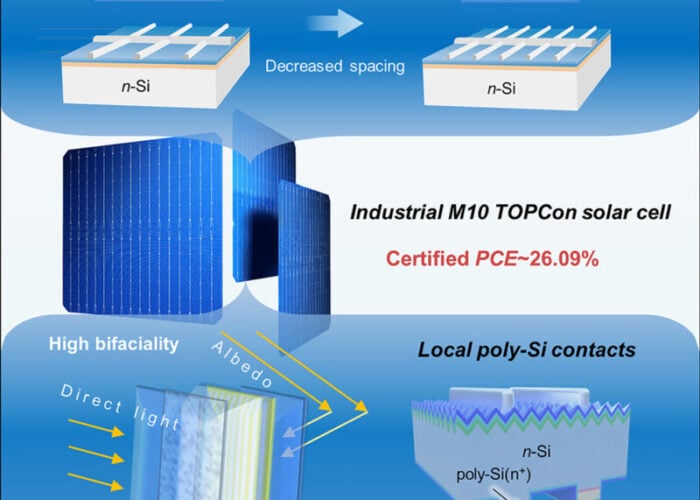
‘Solar Module Super League’ (SMSL) member Trina Solar has produced a bifacial Passivated Emitter Rear Cell (PERC) conversion efficiency of 23.39% using conventional ‘industrial’ manufacturing equipment, believed to be the highest figure to date. The cell was calibrated at ISFH CalTeC.
The cell was fabricated at Trina Solar’s State Key Laboratory (SKL) of PV Science and Technology (PVST), using manufacturing equipment typically seen in standard volume production lines. It has an area of 252 sq cm with nine busbars.
Try Premium for just $1
- Full premium access for the first month at only $1
- Converts to an annual rate after 30 days unless cancelled
- Cancel anytime during the trial period
Premium Benefits
- Expert industry analysis and interviews
- Digital access to PV Tech Power journal
- Exclusive event discounts
Or get the full Premium subscription right away
Or continue reading this article for free
“Progress in PERC cell manufacturing is continuing to be very fast in the whole PV industry”, said Dr. Zhiqiang Feng, the vice president of Trina Solar and the director of SKL, “and we are delighted to announce that our R&D team is at the forefront”.
Dr. Yang Yang, the director of the PERC research group at SKL, added: “Our aim is to develop processes that can be transferred to production, therefore we decided to fabricate such champion PERC cells purely on equipment that is part of standard manufacturing lines, like metallization with standard screen-printers”.
Trina’s principal scientist Dr. Pietro P. Altermatt said: “Each world record refers to a certain category, like ‘laboratory cell’, or ‘cast material’. There is no precisely defined category ‘industrial cell’ because equipment in mass production evolves over time, and it is difficult to provide evidence of exactly how the reported cell was processed. Sometimes, higher PERC cell efficiencies are announced, but without stating details about metallization, or whether passivating contacts were used. This makes it difficult to assess progress in the field. This is why we are open about our manufacturing details”.
Trina Solar noted that the only difference to a mass production version of the cell was in the deposition of the antireflection coating, which was adjusted to improve light trapping properties during calibration in air as the cell has when encapsulated in a module.






